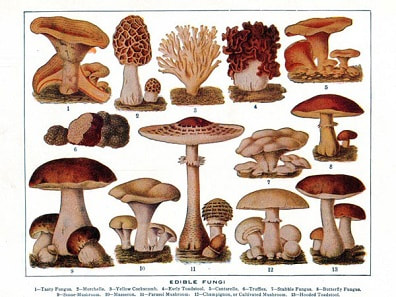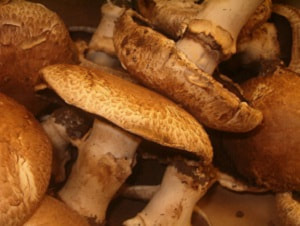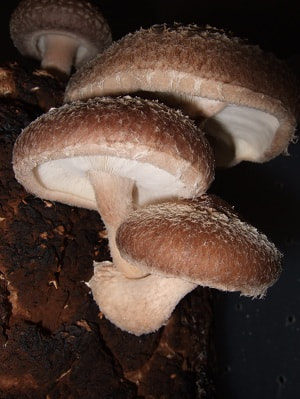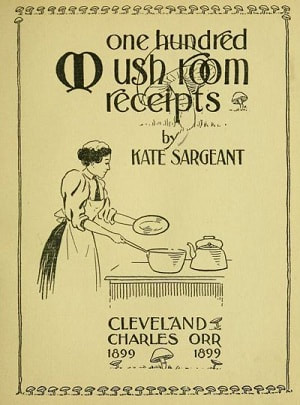|
Mushrooms are innately mysterious. That mystery has imbued them with a vague aura of magic. They are known to be intoxicating and some actually cross the line into toxic. They look as though someone gave a bunch of gremlins a workshop and told them to design their dream food, resulting in more than a few bizarre creations. Initially known for their hallucinogenic properties, it took mushrooms a considerable chunk of history to become a food source. The earliest record we know of a mushroom high was recorded on cave walls on the Tassili Plateau in Algeria about 5,000 years ago. Roughly 3,000 years ago, intoxicating mushrooms were noted in Mexican temples. The toxicity of mushrooms became better known along about the time they began to be eaten for nourishment. Certainly by the 1C AD, the Romans had both a taste of their flavor and an understanding of their usefulness in disposing of un-cooperating individuals. Agrippina, wife of the Emperor Claudius, grew weary of waiting for her son to rule. Aware of Claudius’ love of mushrooms, Agrippina slipped a poison one into the dish after it had been tasted by the Imperial Taster. In Middle Earth, however, the Hobbit Farmer Maggot is famed throughout Eastfarthing for his mushrooms, particularly when his wife prepared them with bacon. Mushrooms are not technically vegetables, though we treat them as such. They are a fungus. As are world-class truffles. It was the French who raised mushroom to culinary distinction and they are credited with their initial cultivation. When British found the French mushroom a toothsome product of only minor effort and expense they brought them to their own tables. It wasn’t until the 19th century that the mushroom hopped the Atlantic as a food. Later in that same century, an American mushroom farmer and experimenter in Long Island, William Falconer, compiled all the known mushroom wisdom along with the results of his own experiments and published “Mushrooms: How to Grow Them; A Practical Treatise on Mushroom Culture for Profit and Pleasure”. Once it became a viable farm product and income producer, the quest for recipes began in earnest. The ever resourceful, the very American Kate Sargeant, created many new ways to feed those at her table with the substantial mushroom. She published her mushroom masterpiece, “One Hundred Mushroom Receipts”. When it comes to mushrooms, American tastes continue to expand. In 2016, publishers produce 6 new mushroom cookbooks. There are many meaty mouthfuls out there. To the approval of local hobbits, we have focused on the Shitake mushroom this week. Our recipe today is a Shitake, Leek and Bacon Tart with a creamy cheese custard. It makes a lovely festive lunch or an easy light dinner. You will find many other mushroom recipes such as Grilled Portobello Sandwiches with Aioli, Mushroom Crepes, and Shrimp Sautéed with Ramps and Mushrooms on the website, just enter the word mushroom in the search box.
0 Comments
Leave a Reply. |




